SHORT HISTORY OF HAGIA EIRENE
After the Nika Revolt in 532, as part of his vast reconstruction program that included more than 30 churches Justinian rebuilt the burned-down Hagia Eirene as a domed basilica.
Further damaged by the earthquake of 740, the Iconoclastic emperor Constantine V restored it and added the legendary Iconoclastic cross still visible today.
Fatih Sultan Mehmed conquered Constantinople in 1453 and immediately converted Hagia Sophia into a mosque. However, Christians working in his imperial palace continued to use Hagia Eirene for a short period. Eventually, when Topkapi Palace was expanded, a wall was built that separated the church from Hagia Sophia and from the public. Hagia Eirene remained inside the palace walls and that’s why I say it effectively became a church for the Ottoman sultans.
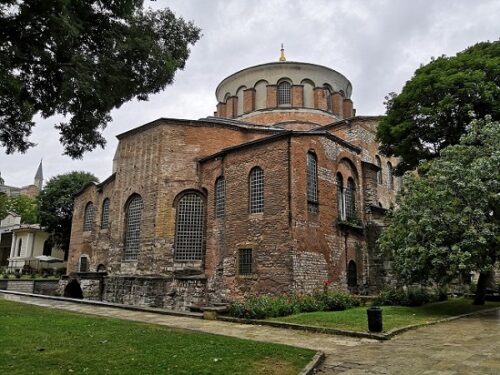
Try to imagine people entering the Topkapi Paace for their business and seeing this church within the confines of the imperial court. I’m sure that no one at the time would have mistaken this unmistakably Byzantine structure for anything else.
It was also a powerful message from Fatih Sultan Mehmed. A way of showing that he could do whatever he wished. He converted Hagia Sophia into a mosque, but left Hagia Eirene untouched. It was his pure caprice.
The Janissaries, who resided in the adjacent barracks, later used it as a weapons warehouse. During the reign of Sultan Ahmed III, Hagia Eirene served as an armoury.
Between 1846 and 1974, it functioned as the Museum of Antiquities and later the Military Museum.
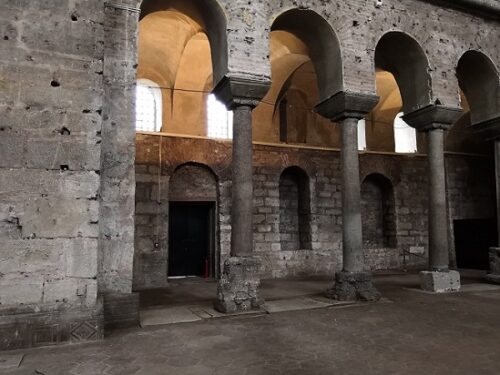
ICONOCLASTIC CROSS
The most important mosaic decoration visible today is in the apse. A rare example of Iconoclastic art, it consists of a black cross on a golden background. Constantine V and other proponents of Iconoclasm rejected religious imagery. So, Constantine V commissioned decorative programs focused on the True Cross.
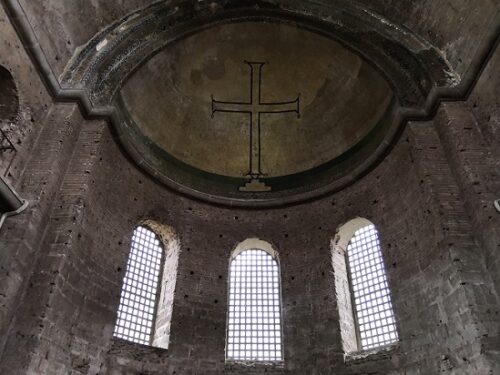
That is exactly why the didn’t decorate Hagia Eirene the way they decorated Hagia Sophia. You won’t see images of Christ or the Virgin, but you will see the symbol of the True Cross instead.
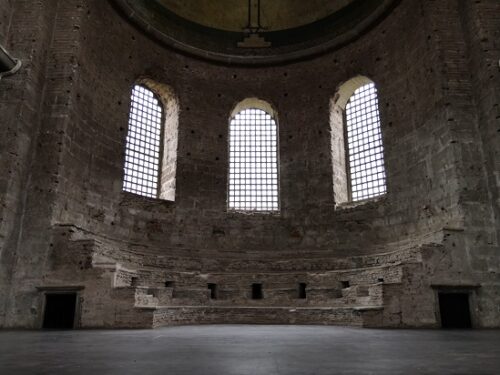
MUSEUM WITHIN A MUSEUM
I visited Hagia Eirene in 2019 and paid 30 Turkish liras for the ticket. The photos in this post are from that visit and, I believe, nothing significant has changed inside since then. In fact, much of it has likely remained the same for nearly 1500 years.

If you follow the official link, you will see that the current ticket price is now 900 Turkish liras.
In my opinion, the entry fee is too high, especially considering that you would also want to visit Topkapi Palace and its Harem while you are there.
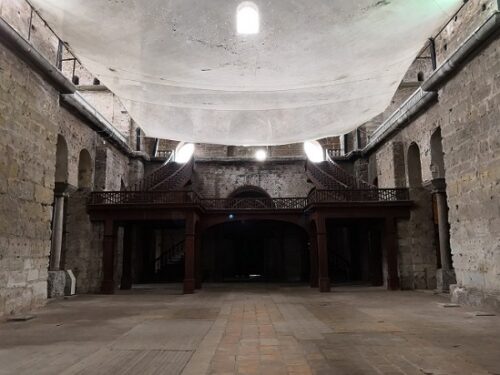
CHURCH FOR OTTOMAN SULTANS
Naturally, the Ottoman sultans had no interest in this former Byzantine church. They were occupied with governing and expanding their empire and building majestic imperial mosques across Istanbul and other cities.
Nevertheless, Hagia Eirene remains a curiosity. One would assume that it would have been among the first churches to become a mosque, yet it never was.
It stands today as a small, but precious museum within the vast Byzantine and Ottoman heritage of the city.
Back to Turkey


